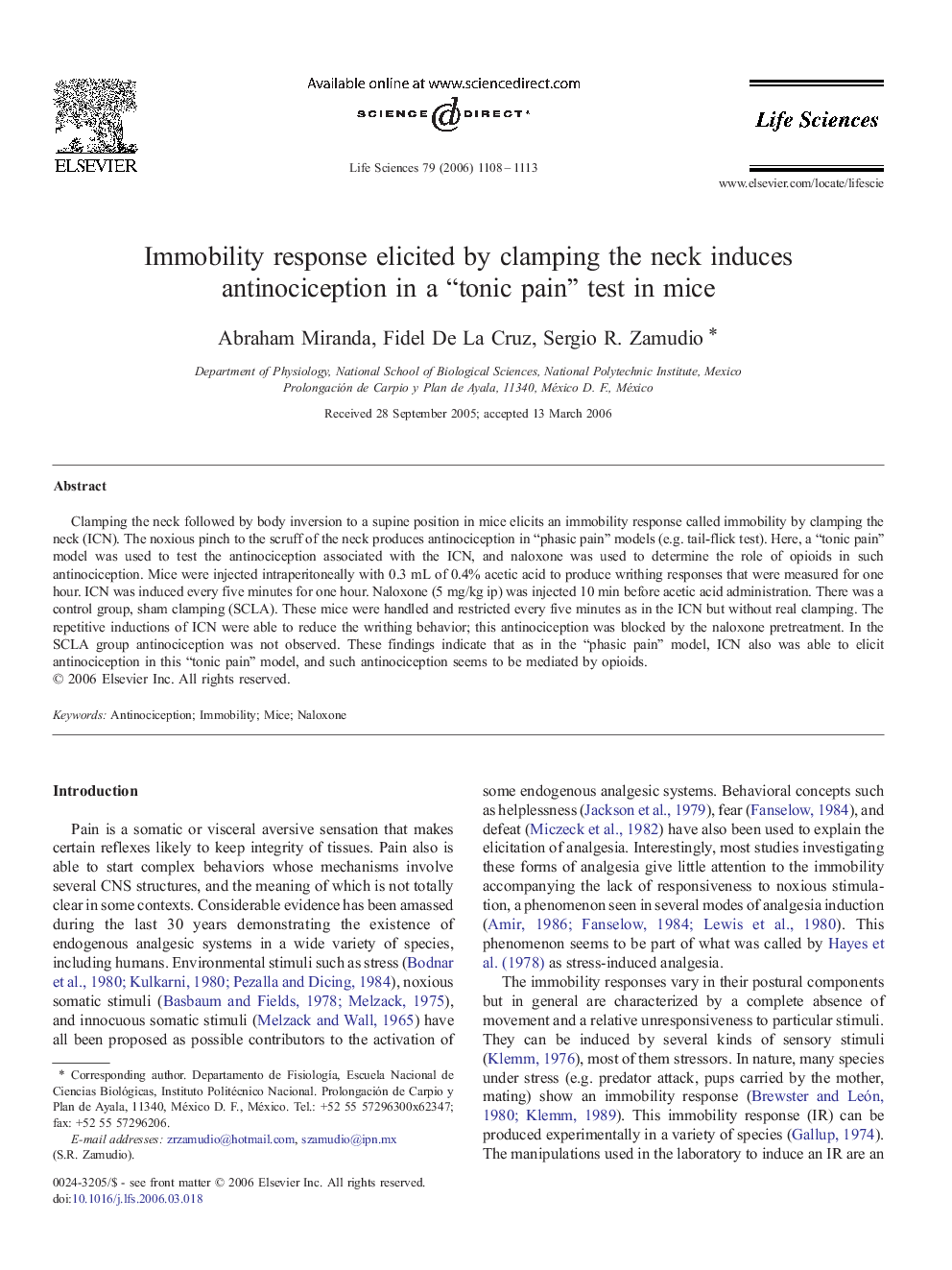| Article ID | Journal | Published Year | Pages | File Type |
|---|---|---|---|---|
| 2554063 | Life Sciences | 2006 | 6 Pages |
Abstract
Clamping the neck followed by body inversion to a supine position in mice elicits an immobility response called immobility by clamping the neck (ICN). The noxious pinch to the scruff of the neck produces antinociception in “phasic pain” models (e.g. tail-flick test). Here, a “tonic pain” model was used to test the antinociception associated with the ICN, and naloxone was used to determine the role of opioids in such antinociception. Mice were injected intraperitoneally with 0.3Â mL of 0.4% acetic acid to produce writhing responses that were measured for one hour. ICN was induced every five minutes for one hour. Naloxone (5Â mg/kg ip) was injected 10Â min before acetic acid administration. There was a control group, sham clamping (SCLA). These mice were handled and restricted every five minutes as in the ICN but without real clamping. The repetitive inductions of ICN were able to reduce the writhing behavior; this antinociception was blocked by the naloxone pretreatment. In the SCLA group antinociception was not observed. These findings indicate that as in the “phasic pain” model, ICN also was able to elicit antinociception in this “tonic pain” model, and such antinociception seems to be mediated by opioids.
Related Topics
Health Sciences
Medicine and Dentistry
Cardiology and Cardiovascular Medicine
Authors
Abraham Miranda, Fidel De La Cruz, Sergio R. Zamudio,
